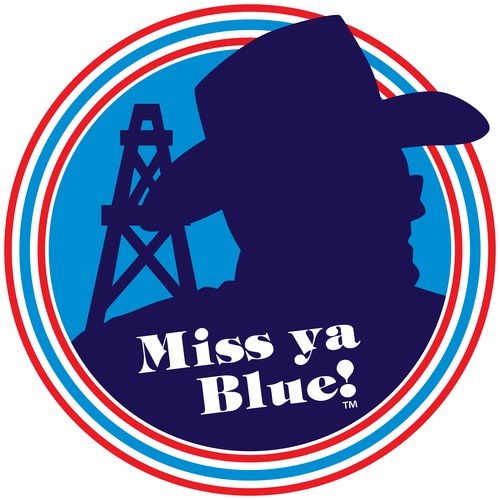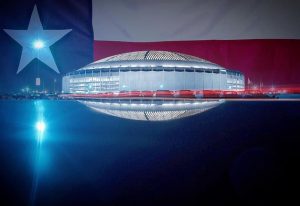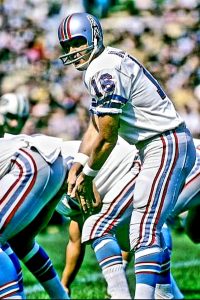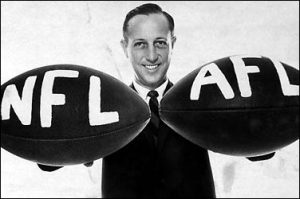The Astrodome, Part 3

“The Roof is on Fire, and the Grass Ain’t Real!”
By DILLON HOLLOWAY
PREVIOUSLY – The Astrodome, Part 1: “Breaking Ground on The Eight Wonder of the World”
PREVIOUSLY – The Astrodome, Part 2: “The Foundation Laid, History Made”
Across the Dome’s roof were some 4,596 skylights, which caused a blinding glare for fielders during day games.
The translucent Lucite panels were designed to transmit the light necessary to allow a grass field to grow and were also effective at cutting the harsh Houston overhead sunlight to a bearable gleam.
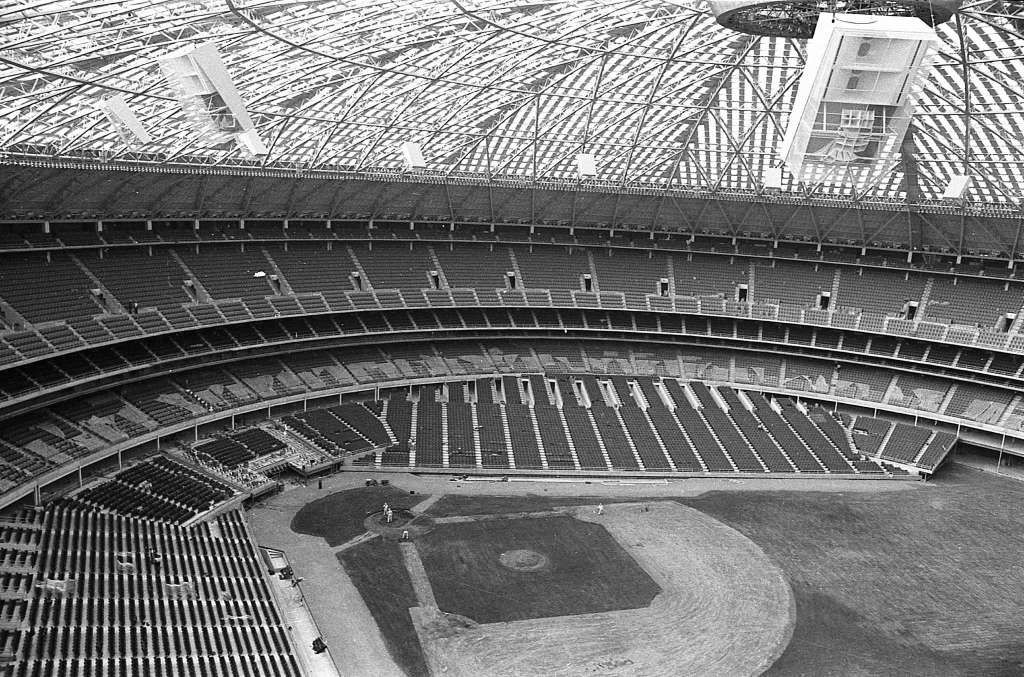
However, when coupled with the indoor stadium lights, they produced a horrifically blinding glare for fielders staring up at them in search of fly balls.
Routine fly balls were badly missed as fielders tried tracking the ball across the ceiling, shielding their eyes with gloves while trying to find a small white dot amid the illuminated tan roof.
This became especially problematic in left field and center field.
Quickly, Astros management called National League president Warren Giles to propose the use of dyed baseballs.
Giles noted the Brooklyn Dodgers experimented with yellow baseballs in 1938 during a doubleheader, but usage was stopped because the baseballs became discolored more quickly than a normal ball.
The team then used yellow, orange, and cerise dyes on baseballs in an effort to determine a color that might contrast well enough with the domed roof. Additionally, several shades of sunglasses were delivered to the team.
Only 21 day games were scheduled at the Astrodome in 1965, but the glaring problem had to be solved.
In a situation akin to today’s world, the Astros office was flooded with phone calls with suggestions from the public on how to fix the problem.
One of the more outlandish solutions was to have a huge balloon or blimp inside the Dome to block the glare.
On April 17, 1965, an optimistic Dome visionary Roy Hofheinz and beleaguered Astros General Manager Paul Richards met with the DuPont Company, the manufacturers of the Dome skylights, to discuss possible solutions for the glare, with Hofheinz stating, “Never fear. I will not be the first man to call a game on account of sunshine.”
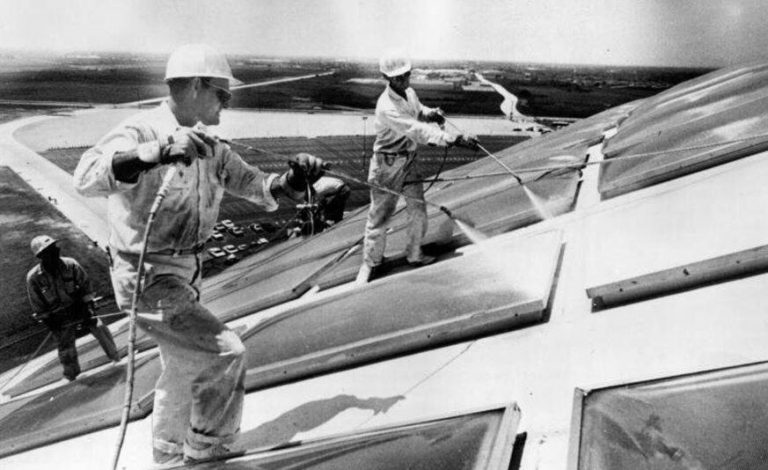
On April 22, 700 gallons of off-white paint was sprayed to the top of the Astrodome and diminished the glare by 25-40%.
However, the paint also had a drastic unintended effect: it no longer allowed sufficient light to reach the field, and the grass began to die.
Even with constant watering, the grass continued to die, and by mid-May, Astrodome grounds crew members were spraypainting the dead grass green.
Upon hearing of a government-funded product made by the Monsanto Corporation called “Chemgrass,” Hofheinz ordered 30-foot samples, which were sent to Houston for preliminary tests.
Hofheinz brought in the Harris County Sheriff’s mounted patrol to ride horses on it, he brought in cars to drive over it, and he even brought in elephants to trample it.
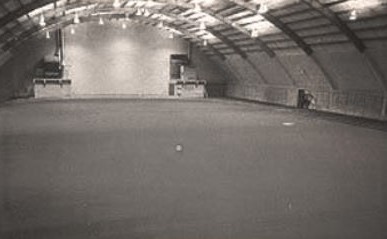
Monsanto had created the product in 1964, testing it first at the Moses Brown School in Rhode Island.
In November 1965, Monsanto agreed to make its initial installation of an artificial surface at the Astrodome after Hofheinz offered the stadium as a free test site.
At that point, the surface was only installed in the infield and foul line areas, because Monsanto only stocked a small quantity of the turf and had to fast-track production for the Dome’s spacious outfield.
The Astros’ first home exhibition game of 1966 against the Los Angeles Dodgers would be played on what was now being rebranded as “Astroturf.”
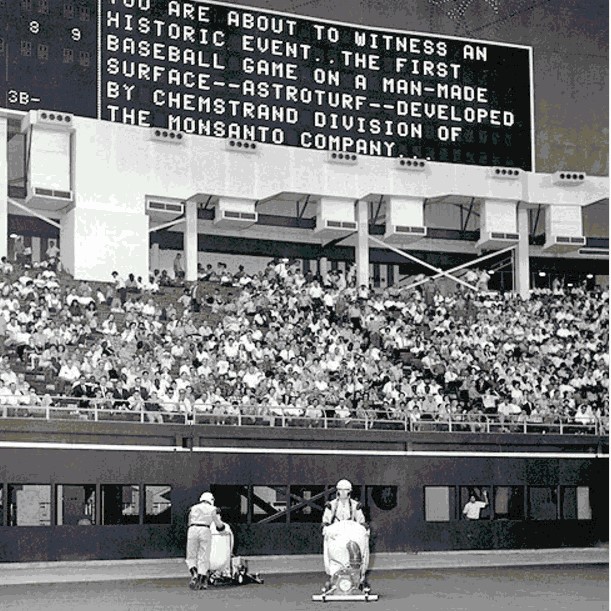
The artificial grass surface received rave reviews as Astros third baseman Bob Aspromonte, who participated in a test practice of the turf, stated, “I would rate the Astroturf infield as one of the top two in baseball.
“The only infield that might be better is the infield at Candlestick Park in San Francisco, but there you have to worry about the darn wind.”
On March 19, 1966, Hofheinz greeted the media with small swatches of Astroturf that were used for the test two months prior.
Remaining sections of the field were sold at the Galaxy Gift Shops in the Astrodome for $1 apiece.
The first regular-season MLB game on an artificial surface was played a few weeks later on April 18, as the visiting Philadelphia Phillies blanked the Astros, 2-0.
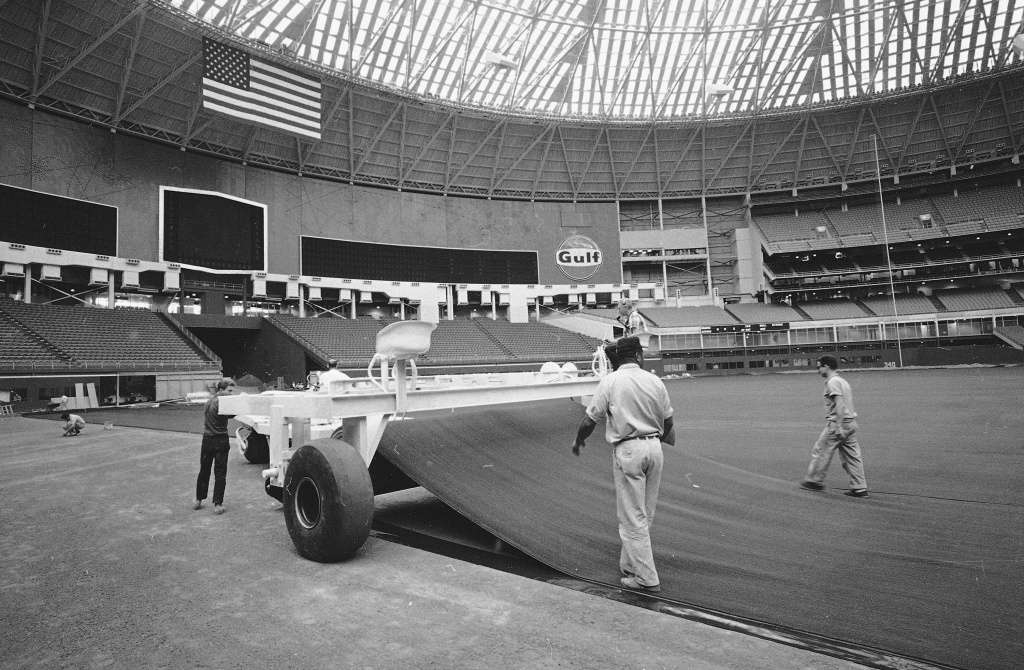
After the 1966 All-Star break, the Astros beat the Phillies 8-2 in the first MLB game played entirely on the AstroTurf artificial surface.
The last piece of leftover pseudo-sod was sent to legendary Chicago Cubs Manager Leo Durocher, who, in typical “Leo The Lip” fashion, had been very vocal against Astroturf.
Durocher later returned the package with a pound of fertilizer included to Astros Publicity Director Bill Giles, but the Astros got the last laugh on Leo.
In two different 1966 games, Durocher ripped the dugout phone off the wall in frustration to Astro rallies. Each time, the Astros sent him a repair bill for those episodes.
The Astros’ 2000 move to Minute Maid Park marked the first time the Astros franchise had played a home game on grass since the debut of Astroturf in 1966.
The last time the Astros played on traditional Astroturf was in 2004 against the Montreal Expos at Olympic Stadium in Montreal.
These days, some 160 million feet of new-generation Astroturf are installed throughout the world.
Dillon Holloway is a native Mississippian currently residing in central Oklahoma. He is a rabid football fan and a historian of the sport. He is a husband, a military officer, volunteer teacher and football coach, and emerging guest speaker. He graduated from the University of Mississippi with a bachelor’s in English and a minor in aerospace studies. He played football from pee-wee through high school, winning the 2A Midsouth Association of Independent Schools (MAIS) state championship and was named first-team all-district guard in 2011. Since his first football practice, he has always made the sport a part of his life in some fashion, and writing for Miss Ya Blue! allows him to continue to do so.
#houston #oilers #htown #houstontx #houstonoilers #nfl #astrodome #sports #star #history #football #luvyablue #missyablue #texas #houstonblogger
